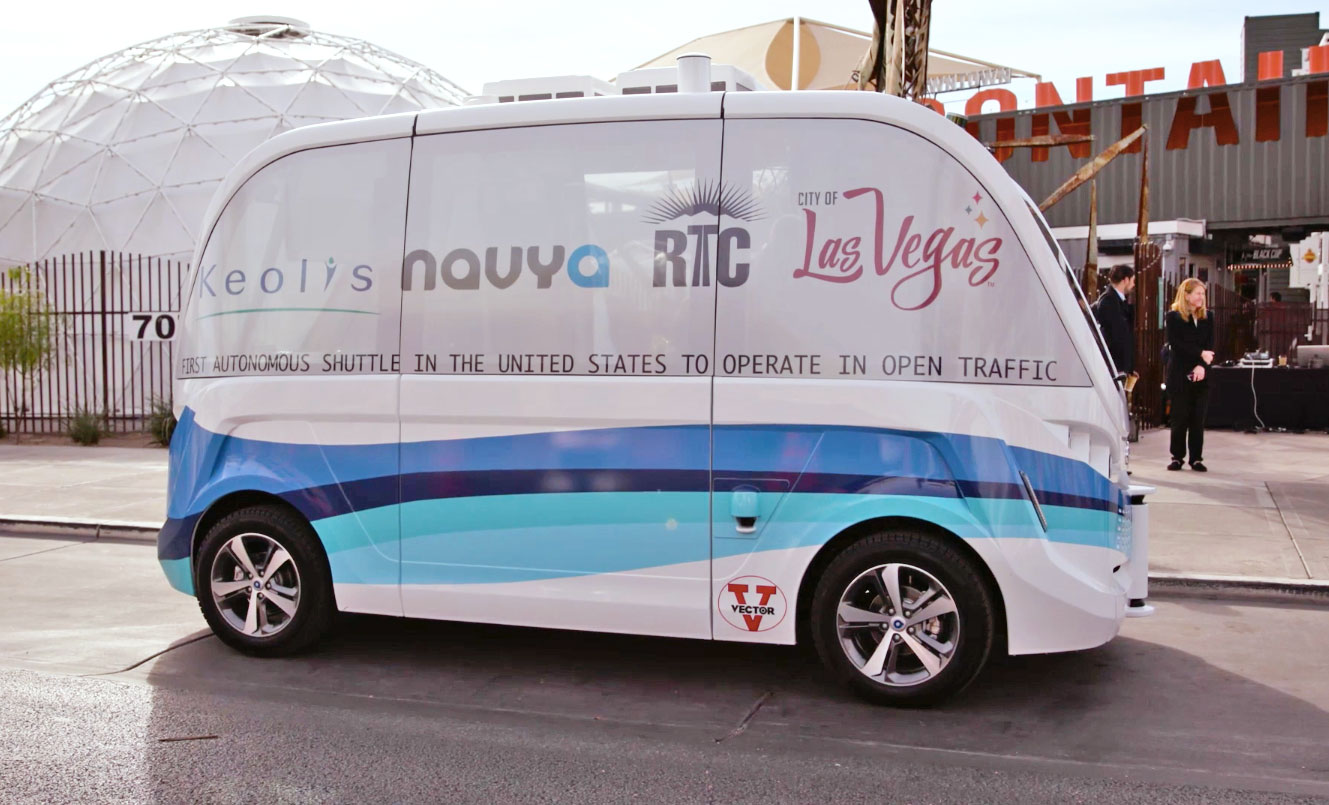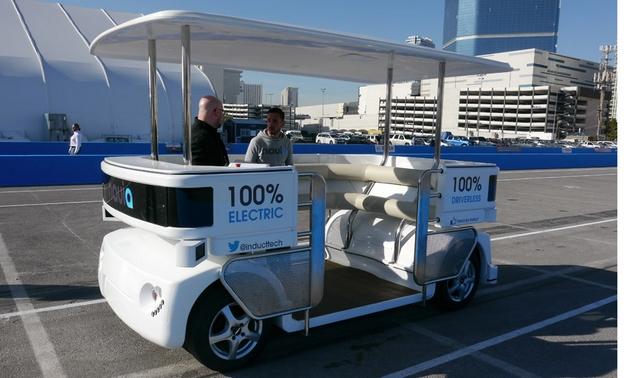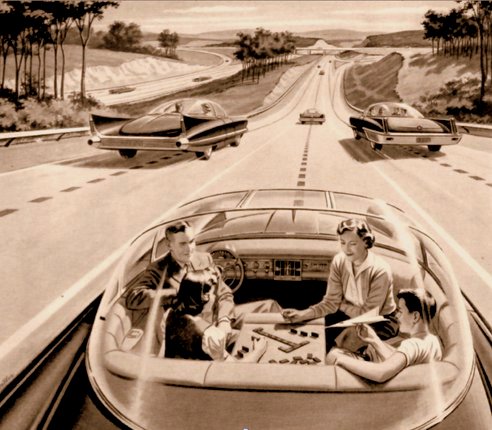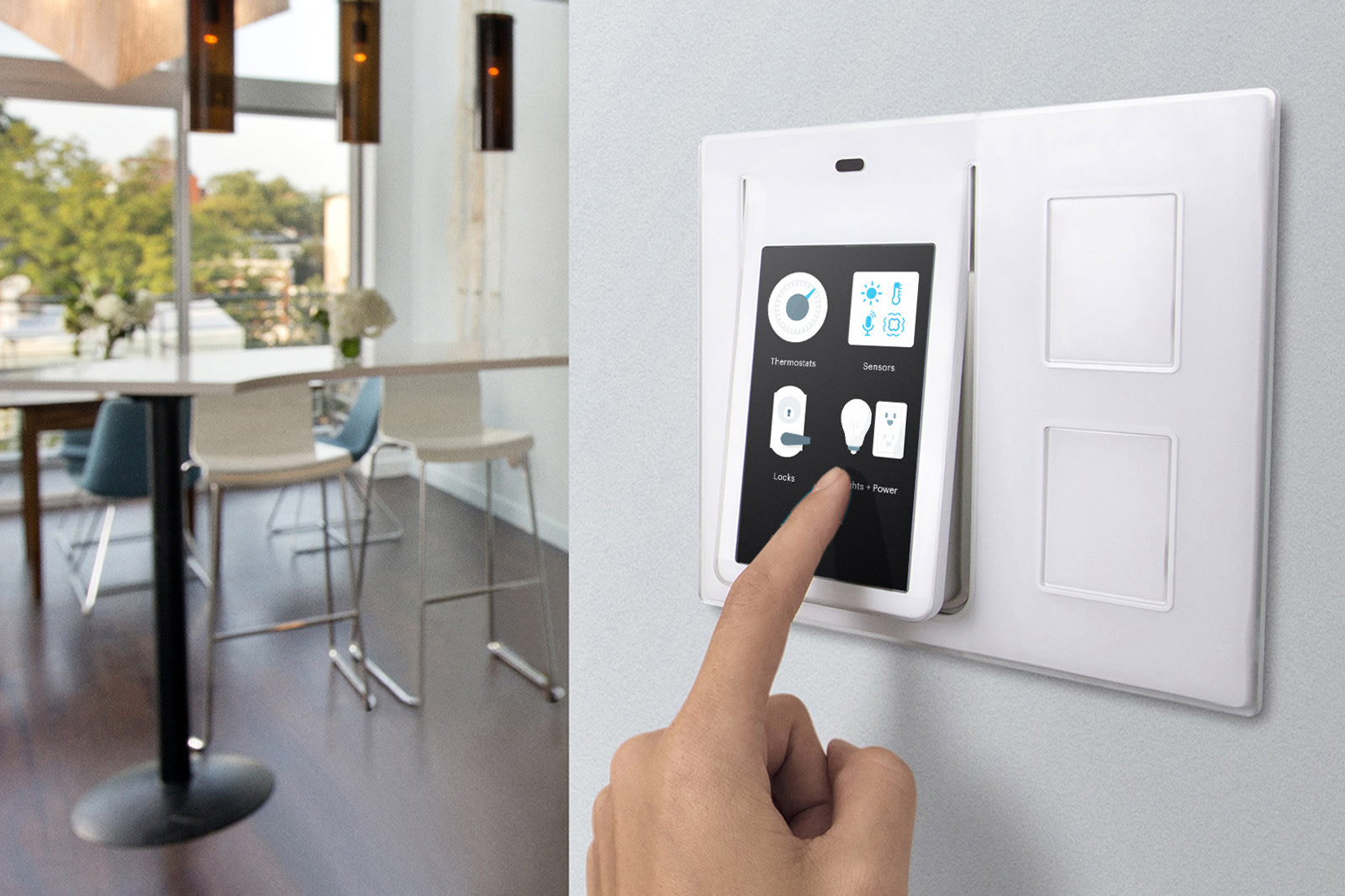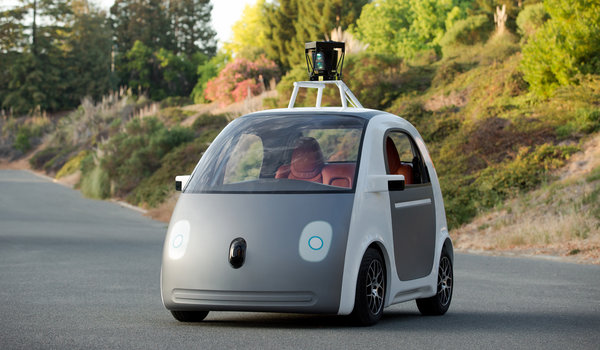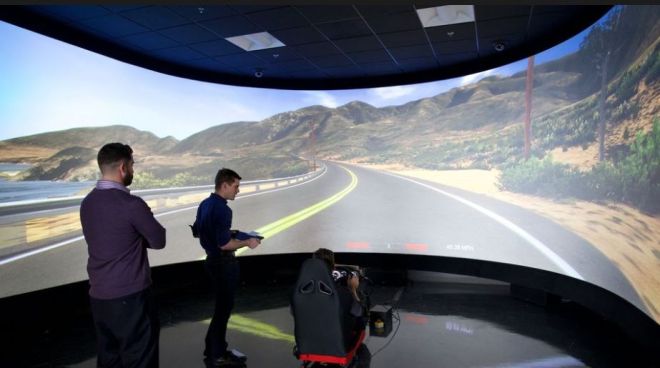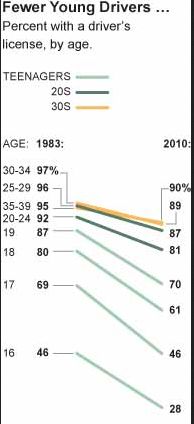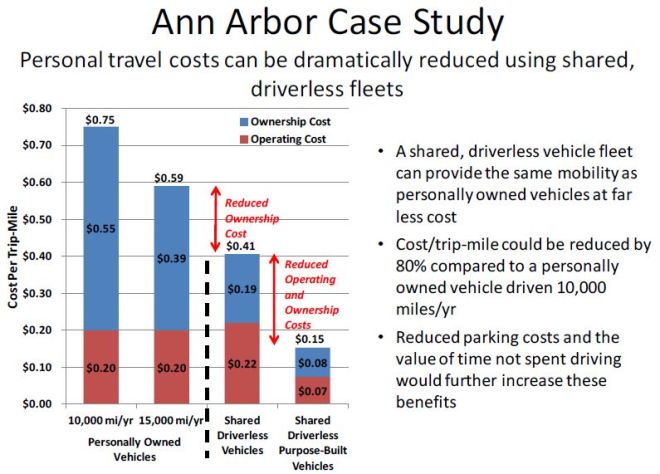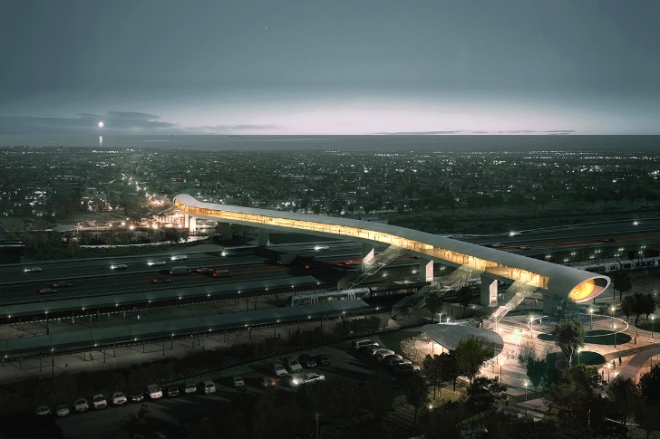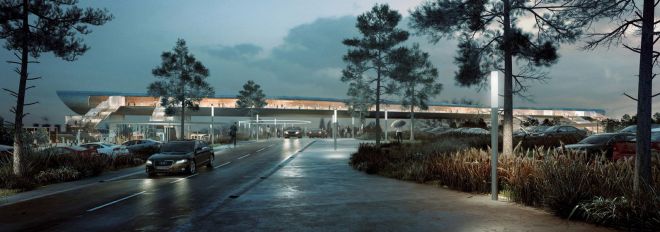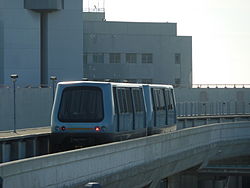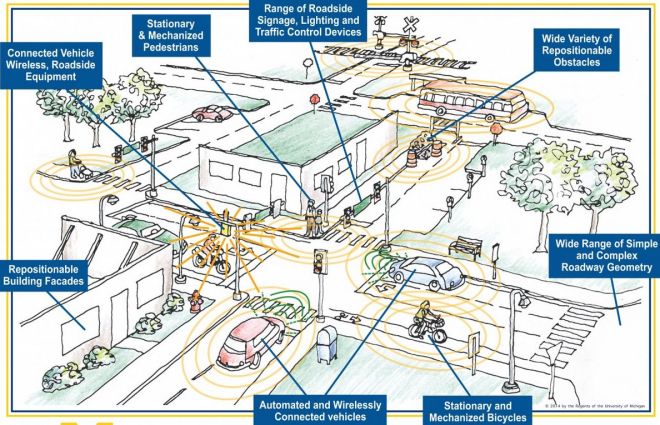This proposal envisions self-driving cars in Portland. Autonomous last mile transit may help reduce congestion. So can smarter cars and smarter highways, bus rapid transit, congestion pricing, hyperloop, biking and electric scooters.
Lyft aims to bring fully driverless cars to multiple US cities in 2023. Uber, which spent hundreds of millions of dollars on a self-driving car project, sold it to Aurora, a startup founded by CEO Chris Urmson who headed Google’s self-driving project. Their Aurora Driver has been integrated into multiple sedans, an SUV, minivan, a large commercial vehicle, and a Class 8 truck.
Companies building and operating robotaxi fleets include:
- Waymo, which announced deals to purchase “up to” 82,000 vehicles for use in its taxi fleet in 2018, although its fleet still numbers in the hundreds of vehicles.
- Cruise (owned by GM, Honda, and others)
- Argo (owned by Ford and Volkswagen)
- Motional (owned by Hyundai and auto-parts supplier Aptiv)
- Zoox (a startup that was recently acquired by Amazon)
- Aurora (a startup that recently acquired Uber’s self-driving program)
Above is a Transportation Vision for Hayden Island. But a state-wide network of community charge stations using standardized containers and resilient solar might save lives as well as money. (pdf).
Moovit provides travelers with multimodal trip planning by combining public transportation, bicycle and scooter services, ride-hailing, and car-sharing. Aptiv and Hyundia joined forces in March and renamed the group Motional, which is working with Lyft.
Autonomous cars may become a reality faster than major bridge projects. Uber plans to buy up to 24,000 self-driving cars from Volvo, to become the owner/operator of a fleet of self-driving cars. Volvo’s agreement with Uber and Ford’s with Lyft show the heat is on to cut out the driver and turn profits.
Google’s Waymo has been testing on the roads of Kirkland, Washington, since 2016. Seven companies are testing autonomous vehicles on public roads in Washington State:
- May Mobility – Michigan-based startup focused on self-driving shuttle fleets
- Navya – French robotaxi developer
- NVIDIA – Established chipmaker that has branched into artificial intelligence and vehicle software and sensors
- TORC Robotics – Blacksburg, Virginia-based company with significant defense contracting revenues
- Dooblai – Self-driving car software company in Redmond/Bellevue, Washington
- Simple Solutions – California-based computer networking company
- Waymo – Self-driving car subsidiary of Alphabet, Inc.
DITCH YOUR CAR
Motional and Lyft operate the robotaxi service in Las Vegas and Lyft purchased Motivate which operates Biketown. Connect the dots.
Congestion is the problem. There are too many cars. Most sit parked. Autonomous transit can deliver commuters to the nearest transit hub. Autonomous vehicles might BE mass transit – when “platooned” together.
Better mass transit is one solution. But the only way to get people out of their cars and into mass transit is to make it (1) Cheaper (2) More convenient (3) Faster.
Congestion costs Portland commuters $1.76 billion in time and fuel in 2014, according to a 2015 analysis by the Transportation Institute at Texas A&M University. In 2017, Inrix estimates that Portland delays cost $3.9 billion in fuel, lost time and freight delays. That’s $1,648 a year per metro resident.
Gas for a car costs about $.12 per mile while electricity costs about $.04 per mile. Automatic driving is more convenient. Congestion pricing for reduced rush hour traffic and streamlined transit lanes would be faster and give people more transportation options. Cheaper. More convenient. Faster.
Waymo already has self-driving cars in Phoenix, but now you can hail a completely autonomous vehicle…with nobody on-board. Jacksonville’s autonomous EasyMile Gen-2 people mover is powered by four batteries that store 30 kilowatts, recharged using Level 2 charging, a common standard found on most electric cars. A full recharge takes approximately five hours. It seats up to eight people and allows seven more passengers to ride standing.
Volkswagen’s Sedric, here in 2021, is a typical example of an autonomous people mover. Intel is building a fleet of 100 autonomous cars to test self-driving software in partnership with BMW, Volkswagen, and Nissan. GM’s autonomous car, deploying in 2019, is based on an EV Bolt. Portland’s RFI for Autonomous Vehicles and California’s Proposed Driverless Regulations establish a path for the testing and deployment of fully autonomous vehicles.
ODOT has formed a task force on automated vehicles and will report legislative recommendations by September 2018.
Here’s my own proposal for an I-5 congestion fix using autonomous vehicles over a dedicated bridge to the Yellow Max line.
The National League of Cities reports that cities need to speed up their efforts of preparing for autonomous cars. Currently, some 35 cities including San Francisco, Austin, Nashville, Washington, Paris, Helsinki, and London are running autonomous vehicle tests.
The Madrona Group propose to convert I-5 between Vancouver and Seattle into an autonomous vehicle corridor (pdf). They suggest a phased in approach that begins with allowing autonomous vehicles to share the HOV lanes immediately and progresses to devoting two lanes to autonomous vehicles. Finally, by 2040, all lanes of I-5 will be dedicated to autonomous vehicles during peak travel times.
Local tech, transportation, and development companies created the ACES Northwest Network to ensure cars that are “Automated, Connected, Electric and Shared” (ACES). Members include INRIX, Nvidia, Uber, Lyft, Amazon, Puget Sound Energy, and others.
Las Vegas is testing a self-driving Navya shuttle. Waymo, owned by Google, has signed a deal with Lyft and Chrysler to bring autonomous vehicle technology into the mainstream through pilot projects in Phoenix, Kirkland, and elsewhere. Waymo uses Avis to manage their autonomous fleet in Phoenix.
Uber has rolled out autonomous vehicles on city streets in Pennsylvania, California and Arizona. The 2019 Audi A8 is the first production car with level-3 autonomy. That would be now.
Gov. Jay Inslee signed an executive order in June, 2017 that will allow driverless cars to test-drive on Washington roads, with or without a human behind the wheel, by this summer. Inslee’s order was backed by executives from General Motors, Google and Uber and established an autonomous vehicle work group to advance the objectives of the Executive Order.
Washington State will follow New York and California to allow full autonomous tests. Each year, the number of states considering autonomous vehicle legislation has increased. So far in 2017, 33 states have introduced legislation. Last year, 20 states introduced legislation.
Mayor Ted Wheeler and Transportation Commissioner Dan Saltzman directed the Transportation Bureau to draft policies for autonomous vehicles that would give developers a path to apply for permits to test them within the city, including on open, public roads.
The directive tells PBOT to take four actions to advance the Smart Autonomous Vehicle Initiative (SAVI) within the next 60 days:
- “Propose for City Council and public consideration Interim Transportation System Plan (TSP) policies that ensure connected and autonomous vehicles will serve Portland’s safety, equity, climate change, and economic goals;
- “Publish a Request for Information (RFI) that invites AV testing specific to advancing safety, equity, climate, and economic goals;
- “Adopt an Interim Administrative Rule that provides a clear path to permit innovators to apply to test, pilot or deploy AVs in Portland; and
- “Develop public engagement, reporting, and evaluation plans that ensure Portland residents, workers, and businesses have opportunities to shape the “rules of the road” for AVs in Portland.”
“We can’t simply dismiss the idea that autonomous vehicles are going to be a big part of our transportation system,” Wheeler said.
The Navya Autonom Cab comes with 22 kWh or 33 kWh battery packs and holds 6 passengers with two rows of 3 passengers.
C-TRAN’s Bus On Shoulder program uses the shoulder of SR 14 to by-pass traffic when the highway is congested. A similar approach might be used for autonomous cars in platoon mode. No new infrastructure.
Here’s a walking tour of New York’s elevated linear park, The Highline. Pedestrians and gardens on top, autonomous below. Rails re-imagined. No rails. Connections to Hyperloop.
Big Drivers
Congestion, deaths, and pollution are the big drivers towards autonomous transportation. On-demand vehicles can provide last mile connectivity to mass transit, while reducing the need for parking. Driver error causes 95% of highway deaths. Transportation is a service that YOU might prosper from. Driverless vehicles are anticipated to increase productivity while reducing pollution, deaths and congestion.
Transportation in cities across the U.S. could be greatly impacted by autonomous services offered by Lyft and Uber for the “last mile”. One study, Driverless Future: A Policy Roadmap for City Leaders, found driverless cars could cause a shift of up to 60 percent from traditional vehicles in the New York metro area alone over the next 15-20 years.
Consider this an Autonomous Vehicle Plan for 2030 (pdf). It’s estimated that most cars on the road will be autonomous by 2035. Portland’s Transportation Plan did NOT consider autonomous vehicles — a huge oversight if you take industry projections seriously. The dominance of autonomous vehicles is a guarantee.
C-TRAN’s $58 million Bus Rapid Transit project on 4th Plain, was 80 percent funded from a Federal Transit Administration Small Starts grant, with C-TRAN kicking in 14 percent and another 6 percent from the State of Washington.
If the self-driving Navia costs $10,000/month to operate and carries 250 people a day or 7,500 a month, that totals about $1.50 a head – broadly speaking – far cheaper than bus transit.
Autonomous vehicles may cost between $50,000 and $70,000, but commercial markets could deploy them 24/7 – without driver or gas overhead – enabling faster profitability. Coal-powered vehicles might be eligible for subsidies by the Trump administration.
[Here’s my original 2013 proposal. Not much has changed in the 3+years (except that people now know what autonomous cars are), but when the $50M Smart Cities contest was announced, I de-emphasized the Columbia Crossing component and promoted the 5G wireless and Tillikum bridge concept and moved it to this domain.]
Overview
This paper proposes an autonomous test-bed connecting Portland State to OMSI. The ultimate goal is to move people from a Vancouver WA hub to the Yellow Max line at the Expo Center. Battery-operated, rubber-tired, people-movers could use a much cheaper pedestrian bridge. No tracks. No overhead power.
Here is an executive summary (pdf) and a simplified explanation of how connected vehicles would work in the real world (US-DOT).
Developing autonomous vehicle expertise with a Portland-based incubator is one goal. Addressing urban congestion is another goal.
Everybody’s Doing It
- Ford plans a high-volume, fully autonomous SAE level 4-capable vehicle in commercial operation in 2021 in a ride-hailing or ride-sharing service and is investing in or collaborating with four startups to enhance its autonomous vehicle development.
- Uber will soon let users of its popular ride-sharing app hail autonomous Volvo SUVs in Pittsburgh. Uber acquired the self-driving Otto in July.
- The Renault-Nissan Alliance plans to launch ride-hailing and car-sharing services. Nissan will compete with General Motors’ Chevy Bolt and Tesla’s Model 3 by offering a mass-market electric vehicle for under $40,000.
- General Motors bought self-driving software startup Cruise Automation in March and invested $500 million in ride-sharing service Lyft. The Bolt is their first autonomous platform.
- Google struck a deal in May with Fiat Chrysler to put its software in 100 minivans and is planning to expand a ride-sharing service built around its Waze navigation app in San Francisco.
- Singapore’s autonomous taxi service will use technology provided by nuTonomy.
- Honda thinks their NeuV could “function autonomously as a ridesharing vehicle” and earn you some extra cash.
- Jaguar Land Rover’s mobility services business, InMotion, invested $25 million in Lyft and will develop and test services including autonomous-drive vehicles with the ride-sharing operator.
Lyft has tried to position itself as an agnostic player in the autonomous vehicle industry with its Open Platform Initiative, under which it will cooperate with car manufacturers to test self-driving cars and use their technology on its ride-hailing network. The self-driving start-up nuTonomy and Land Rover, among others, have already joined. Uber is valued at $69 billion, more than any other privately held tech startup in the world.
In China, the world’s first driverless Autonomous Rail Rapid Transit system has started testing in Central China’s Hunan province. The electric vehicles run over pavement, which has been described as a “cross between a bus, train and tram.” Equipped with sensors, it can read the dimensions of a road.
The three-carriage vehicle is 32 meters long, with a maximum speed of 70 km per hour and can carry up to 300 passengers. The developer said that the system cost just one-fifth a traditional tram system. No overhead power wires.
Smart City Challenge
The US Smart City Challenge asked for data-driven ideas. The winning city was expected to incorporate the Intelligent Transportation Systems with both connected and automated vehicles. DOT has 10 vision elements. Winning proposals will likely incorporate at least one of the elements to solve transportation challenges. A Smart City Challenge finalist will have the following characteristics:
- a population between 200,000 and 850, 000
- dense urban population
- existing public transportation system
Portland was one of 78 cities around the country that applied for the $50 million federal ‘Smart City’ grant (#SmartCityChallenge).
Portland was chosen as one of seven finalists in the Smart City Challenge, but Columbus, Ohio won the final contest. Columbus lined up about $90 million in local matching commitments, including $19 million in public money. That gave it a total of $140 million to upgrade Columbus’ transportation network.
Columbus plans include:
- Deploying electric, connected, self-driving vehicles to help bridge the “first and last mile” gap to public transit. Local Motors is prepared to deploy talking, electric, self-driving shuttles.
- Setting up a “smart corridor” where vehicles connect with infrastructure and other vehicles to support bus rapid transit.
- Local Motors makes 3D printed cars. Columbus plans to work with Local Motors on a self-driving electric shuttle called Olli.
The Columbus proposal is available here. The 7 proposals chosen in the finals were:
- Austin, TX (pdf)
- Columbus, OH (pdf)
- Denver, CO (pdf)
- Kansas City, MO (pdf)
- Pittsburgh, PA (pdf)
- San Francisco, CA
- Portland, OR
Google’s Sidewalk Labs is teaming with all 7 Smart City finalists to port analytics to all platforms. This component for integrated, aggregated, anonymized smartphone data for transportation is now available to everyone. Google is competing hard with Amazon’s AWS, which is also offering Smart City cloud services through the US-DOT. Google’s Flow software will help city officials identify problems like gaps in public transit or bottlenecks in traffic so they can ultimately find the fastest, safest, and most affordable way to move people.
– Approximately 100 Sidewalk Lab Kiosks using Google’s’ Flow software would aggregate and analyze mobility data from a great number of sources including Google Maps, Waze, municipal data, and remote traffic sensors to identify what’s causing congestion.
Some people fear that Google’s Sidewalk and Flow services could gut traditional bus services and require cities to invest heavily in Google’s own technologies, reports The Guardian. But Tri-Met and Google have worked together on projects such as the General Transit Feed Specification (GTFS) which encouraged hundreds of independent developers to create competitive products.
– Portland State’s FIWARE — for “Future Internet”-ware — is an open-source technology used for smart cities all over Europe. PSU will use it for the first time in the United States.
The Autonomous & 5G Elements
Specs vary but a typical autonomous transit vehicle is electric-powered, has a range of 50 miles, and can carry 12 passengers.
Current providers include the Navya (Meridian), Local Motor’s Olli, EasyMile, RoboSoft, and 2getthere. Pretty much off the shelf. Zoox, a Robo-Taxi start-up, is taking on Google and Uber and was granted permission by California to use public roads.
AT&T has allied with Cisco, Qualcomm, Ericsson, IBM, and Intel for IoT infrastructure.
Portland could also test 5G “Cloud-RAN”, for vehicular connectivity. Intel is working on “5G” with Ericsson, Nokia, LG and Verizon. Data centers replace radio gear formerly under cell towers. Public kiosks become “small cells” dispensing “free” Public WiFi (paid for by advertising) as well as 5.9GHz DSRC for connected vehicles.
Solving Congestion
The overall economic impact of congestion in the U.S is estimated at $2.8 trillion by 2030 – the same amount Americans collectively paid in U.S. taxes last year, according in Inrix (pdf).
Portland is tied with Chicago and Washington, D.C., for the eighth most congested region, according to a new study by TomTom.
Autonomous I-5 Bridge?
Portland’s Light Rail is already built to the Expo Center. We just need to hop across the Columbia River to offload the crushing Vancouver WA / Portland congestion to Light Rail. Autonomous transport may be the most cost/effective solution.
The autonomous Navia shuttle can fit up to 10 people and is designed to accommodate a wheelchair. The Navia (Meridian) uses anchor points to see along its prescribed course. It could shuttle people around the Jantzen Beach Shopping Center. A similar shuttle might use an inexpensive pedestrian bridge to cross the Columbia.
Tesla’s Elon Musk believes their fully autonomous cars will drive across the US unassisted within 2-3 years. Audi is less optimistic, predicting autonomous vehicles will be here in 10 years or so.
Tesla’s Model S P85D with auto steer is available now. Autonomous cars will likely be here before the next I-5 bridge. Legislative and Regulatory Action for autonomous cars is underway in many states.
Autonomous Vehicles Have Arrived
W-DOT and O-DOT didn’t consider the impact of autonomous vehicles on the Columbia River bridge, but driverless technology will take over taxi and car-sharing fleets in less than 15 years, according to some predictions.
Fiat is working with Google to test the technology in 100 Chrysler Pacifica hybrids and has held separate talks with Uber and Amazon to partner fully autonomous vehicles.
In January, GM invested $500 million in ride-hailing company Lyft and snapped up Cruise Automation for more than $1 billion. Other startups, such as Zoox and nuTonomy, have gained more recognition in the wake of GM’s purchase.
nuTonomy, an MIT startup, is launching a fully autonomous taxi service in Singapore. For Jaguar/Land Rover, nuTonomy will drop off a rider at a shopping center then find its own parking spot. nuTonomy does Level 4 autonomy, or full self-driving automation. Google’s autonomous cars, in contrast, are currently at Level 3, with limited self-driving automation.
GENIVI, also supported by Jaguar/LRover, GM, Intel and others, is open source, In-Vehicle Infotainment software hosted by the Linux Foundation.
Google’s Sidewalk Labs, which is behind LinkNYC’s free WiFi kiosks, plans to expand into transportation, energy, and smart city applications around the world.
Google is testing its self-driving car in Mountain View and Austin, Texas. They’re currently averaging ~10,000 autonomous miles per week on public streets. Business Insider predicts about three percent of new cars will be self-driving by 2020, but an additional 65 percent will be linked to a wireless network.
Within a decade, 1 in 8 cars sold around the world will have autonomous features, a $42 billion-a-year market, estimates Boston Consulting Group.
Portland could be ahead of this curve.
Portland startups that have evolved to become established, successful firms include AppFog, Cloudability, CargoLabs, Elemental, Globesherpa, Puppet Labs, New Relic, Skyward.io, Urban Airship and Urban.systems among many others.
How might a “smart city” infrastructure be implemented? Kansas City, Austin, and New York are utilizing smart Kiosks as hubs. Google picked Kansas City for its first Google Fiber three years ago.
Connected Vehicles
Kansas City is installing 25 Smart City kiosks. The kiosks are a part of the $15.7 million, public-private Smart City project in downtown Kansas City. Kansas City announced the initiative in the summer of 2014. Sprint expects to spend $7 million for the free Wi-Fi along the streetcar line. KCnext, a trade association for the tech industry in Kansas City, is trying to attract firms and startups to work with the sensor data.
Google acquired and merged the companies that have been working on LinkNYC, a similar kiosk system to the one in Kansas City. Google’s Project Fi connects Wi-Fi and cellular networks together while their Sidewalk Labs helped develop LinkNYC hotspots, which are branching into Internet of Things services such as connected vehicles (at 5.9 GHz).
In Portland, a Smart City Corridor might utilize interactive Public Kiosks along the Eastside Portland Streetcar route, connecting Portland State University to the OMSI science center.
One hundred wireless public kiosks, fed by Google Fiber (or radio), could deliver free public WiFi, DSRC for connected vehicles, and fixed access using cloud based Radio Access Networks developed by Intel, AT&T, and Ericsson. “Wireless cable” with Gigabit speeds may deliver 10 Mbps connections to 100 simultaneous users. Beamforming could boost capacity 10x. Backhaul could be fiber or radio. That translates to 100 Mbps for $29.95/month…or even 10 Mbps for $9.95/month.
Google will build a 500-square-foot fiber hut next to the KGON tower by OHSU where it could offer 3.5 GHz Gigabit wireless (as it has in KC). It would be one of several fiber huts Google plans around Portland. Google’s fiber hut might be a good place for Intel’s initial C-RAN testbed.
Google MAY test 3.5 GHz in Portland (blue dots) and WILL test 3.5 GHz in San Francisco (green areas). The red line shows coastal exclusion of 3.5 GHz due to ship’s radar.
Portland’s initial 3.5 GHz antenna may be located near the Portland sign on Burnside, according to FCC filings. Google says 3.5 GHz has a working radius of 30 Km (18 miles). Maybe Google has a sense of humor. The proposed 3.5GHz location is seen about 50 ft away from its nemesis, a Spy-1 Phased Array Radar on the USS Spruance. If that doesn’t trigger a database query, nothing will.
Google may be able to feed hundreds of downtown WiFi hotspots (at 3.5/5 GHz) or provide Gigabit Wireless from a single KGON tower backhaul using 24, 28 or 39 GHz wireless for “5G” connectivity. Verizon may provide competition using their purchase of 39GHz provider Straight Path. This is, I think, fairly obvious and inevitable.
5G is the enabler. It’s bigger than transportation. The truth is, this proposal is less about cars and more about 5G wireless.
Portland Strengths
Jaguar Land Rover’s new tech incubator in Portland invited Pangea Motors of Vancouver, which makes a 16 passenger electric bus as a partner. Portland startup urban.systems was also selected to be part of Jaguar’s partnership. Their fleet management tools and electric vehicles combined offer a new and innovative option for urban transportation.
Intel is collaborating with Ericsson, LG Electronics, Nokia, Verizon and AT&T to lay the foundation for 5G at February’s Mobile World Congress in 2016 (pdf).
- Intel is committed to 5G to extend mobile Internet” into transportation and other fields. 5G will allow “platooning” of 18 wheelers, among other things.
- AT&T is collaborating with Intel and Ericsson for 5G trials in Austin, with outdoor trials this summer. Austin could incorporate Google’s autonomous car (and Google Fiber) in their final “Smart City” proposal to the DOT.
- Intel and Ericsson will trial 5G in Austin using spectrum in the 3.5GHz, 4GHz, 15GHz and 28GHz bands during these tests.
- Intel and LG will develop and pilot 5G Telematics Technology for Cars.
- Intel has announced cloud-based 5G networks to run telecom services from the cloud, while Facebook has teamed up with Intel, Nokia, and several telcos to create an open source hardware and software platform for cellular networks.
- AT&T and Intel want to connect drones to an LTE network.
- Nokia and Intel are demonstrating Narrow Band Internet of Things, a 3GPP Rel. 13 cellular evolution likely to be used in the connected car.
The connected/autonomous car will use 5G technology.
Intel’s 5G initiative, Google Fiber, Daimler/Freightliner headquartered on Swan Island, Jaguar/Land Rover’s tech incubator in the Pearl, GlobeSherpa and Cargo’s software, Pangea’s electric bus, even the I-5 congestion problem give Portland a tactical leadership advantage over Austin and other cities.
With autonomous vehicles, an expensive (light rail/vehicular) bridge is not required. No tracks. No overhead line for power. They can connect to public transit. Fast and cheap.Elon Musk told Bloomberg, “Maybe five or six years from now I think we’ll be able to achieve true autonomous driving where you could literally get in the car, go to sleep and wake up at your destination.” He added that it may take a few years beyond the point when the technology is ready for regulators to sign off on it.
 A Rand report says public transit agencies currently spend 14 to 18 percent of their budgets to provide on-demand paratransit services. The per-trip costs are often three or more times those of fixed-route transit services. The average personal vehicle sits parked 95 percent of its life and only carries 1 person 75% of the time.
A Rand report says public transit agencies currently spend 14 to 18 percent of their budgets to provide on-demand paratransit services. The per-trip costs are often three or more times those of fixed-route transit services. The average personal vehicle sits parked 95 percent of its life and only carries 1 person 75% of the time.
Possible Futures: Linking Vancouver
A testbed for autonomous vehicles on Hayden Island may also be feasible, eventually linking Vancouver to the existing Portland Light Rail, which is about 1 mile south via an autonomous/bike bridge. At the Jantzen Beach Mall, it could connect people to mass transit, drive to different businesses, and drive itself “home” to charge. No driver. Summon it with a button on a pole. Press on the screen map to tell it where to go.
Wink’s controller can order a ride through Uber. Today.
Personal rapid transit — without a driver — might provide on-demand transportation, connecting shoppers to Vancouver and the Expo Center. It could minimize cost, risk, and the disruption of a $2.8 billion vehicular bridge crossing the Columbia River. Shoppers could take the Expo train to the Jantzen Beach shopping center on Hayden Island — or travel to Vancouver WA and back.Google is now developing self-driving prototype cars. The driver will be able to summon the car using a smartphone application and the car automatically drives to the destination.
The electric-powered car is simple: two seats, two buttons and a screen that displays the route. Roush is Google’s manufacturing partner, assembling the autonomous vehicles on the outskirts of Detroit.
Ultra-light mass transit and self-driving, rubber-wheeled people movers are light, clean, and comfortable, connecting neighborhoods to high speed transit.
Connected cars and ancillary IoT hardware and software will be billion-dollar growth industries. Oregon could be leading this charge.
Possible Futures: Drone Delivery
Let’s be realistic. Virtually all 7 final proposals will feature open architecture for multi-platform, multi-vendor access, cloud-based backends from Google, AWS, and Microsoft, the involvement of a transportation-focused university, thriving start-up communities, and major high-tech firms.
Oregon is a drone leader and was chosen as one of the FAA’s 7 national drone test beds. The Columbia River, 1 mile wide and hundreds of miles long, may prove to be the ideal flyway for drone traffic.
– Live 360-degree videos using a $3000 Orah 4i camera would transmit from autonomous vehicles as they traverse over the Tilikum bridge between PSU and OMSI for public engagement.
Portland-based Skyward.io has developed a leading cloud-based operations management system for drones that scales from startup to enterprise with partners such as the FAA, NASA and Verizon. The Columbia River doesn’t have to be used as a pipeline for coal and gas.
Spin-offs from Portland’s Autonomous Development
Platooning and swarming is a “thing”. Consider the applications and spin-offs.
– An autonomous, submarine-hunting ship was launched in Portland in April. Nobody on board. Every month, the Army Corp of Engineers goes back and forth with sonar up and down the Columbia River – row after row – preparing for monthly dredging. They might do it in one day with synched robo-boats. Oregon State has two Autonomous Underwater Vehicles (AUVs) to study plankton blooms and turbidity in the Columbia River.
– A drone delivery element that uses the Columbia River sounds far fetched. Is it? You tell me. I don’t have a clue. I know one thing – they will use similar communications technology.
Portland’s Critical Mass
If the Google autonomous car looks like a Daimler Smart for Two with a Tesla power train — that’s because it is.Tesla builds electric powertrain components for other automakers, including the Smart For Two, the Toyota RAV4 EV, and Freightliner’s Custom Chassis Electric Van. Autonomous cars, modified by Continental AG, might be built and managed at the Daimler facility on Portland’s Swan Island in a partnership with Google. Daimler is the world’s commercial-vehicle leader and is working to introduce trucks that steer, brake and accelerate independently by 2025.
Google has been leading the charge in developing self-driving technology, but Audi, Mercedes Benz, Ford, Nissan, Delphi, Toyota, and Tesla are also in. Mobile Eye may offer an alternative route to autonomous driving.- Audi received an autonomous car permit from the state of Nevada and California and has completed tests on a highway in Florida.
- GM’s “Super Cruise” will automatically keep a vehicle in a specific, properly equipped freeway lane and is expected to debut in a high-end Cadillac in 2016 or 2017.
- Portland-based Freightliner debuted its new Inspiration Truck atop the Hoover Dam to introduce the first street-legal commercial autonomous 18-wheeler in May, 2015. Mercedes-Benz’s autonomous Future Truck for 2025 can drive autonomously at speeds up to 80 kilometres per hour.
- Freightliner’s Inspiration Truck with Highway Pilot was the world´s first autonomous truck to be granted a license for road use in the State of Nevada. Daimler’s self driving truck is completely autonomous on a freeway. It was built by Daimler engineers on Swan Island. Daimler engineers Steve Nadig and Al Pearson guided the developing the self-driving truck.
- The 2014 Mercedes S-Class features the Distronic Plus Steering Assistance System, which gives the vehicle lane-guidance capability, locks on dotted white-lane markings or the car in front on highways at speeds up to 124 mph or on turns of less than 15 degrees.
- Bill Ford, executive chairman of the Ford Motor Company, proposed partnering with the telecommunications industry to create cities in which “pedestrian, bicycle, private cars, commercial and public transportation traffic are woven into a connected network to save time, conserve resources, lower emissions and improve safety.”
- Intel and Ford have a joint research partnership that recognizes the driver and responds to commands with just the wave of a hand. Intel researchers in Hillsboro worked with their counterparts in Ford’s research offices in Dearborn, on what the companies call “Project Mobii” – which stands for “mobile interior imaging.”
- Jaguar Land Rover opened a research center in Portland to explore the market with Intel. It opened April, 2015 in the Pearl.
- Portland-based Cargo has developed hardware and software that opens the trove of information being generated by vehicles, everything from speed and acceleration, to location, to real-time fuel economy and whether the air bags are working.
- Portland startup GlobeSherpa the company that developed TriMet’s mobile ticketing app, was acquired by Austin based RideScout in June, 2015. Their RideScout app allows users to search for and compare time and costs across various ground transport options. Portland is the first city to test GlobeSherpa’s “RideTap” platform that provides ride and route planning across transit, ride share and bike share.
- Daimler now has three distinct presences in Portland: Daimler Trucks North America, Car2Go, and RideScout which was acquired by Moovel, a wholly owned subsidiary of Daimler.
- OpenTripPlanner is an open-source multimodal trip planning software system with an active developer community. It can use biking and walking data from Open Street Maps while integrating the General Transit Feed Specification (GTFS) data from local transit agencies.
How much critical mass would you like?
Market Research
Hayden Island, just south of Vancouver, Washington, is Portland’s only island community, with a population of 2,300 on 1,900 acres, encompassing 1.69 sq miles.Demographics of car ownership are shifting. Younger people are moving towards car sharing, biking and mass transit.
Walk Score ranked America’s best cities for access to public transit, with Portland ranked 10.
A Columbia University report, entitled Transforming Personal Mobility (pdf), suggests that shared AV’s could provide metro area transportation at a total cost per mile between 15 and 41 cents.
A study from Berkeley Lab found that the per-mile greenhouse gas emissions of an electric autonomous taxi in 2030 would be 63 to 82 percent lower than a projected 2030 hybrid vehicle driven as a privately owned car and 90 percent lower than a 2014 gasoline-powered private vehicle.
The Hayden Island test would feature real-time data on battery state-of-charge and vehicle location, along with the data-monitoring required for DOE-funded projects. It might be integrated with SmartGrid 2.0 technologies (pdf) for partner PGE.
The U.S. Dept of Transportation has announced its seventh round of Transportation Investment Generating Economic Recovery (TIGER) grants totaled $9.8 billion, almost 20 times the $500 million set aside for the program, last year.
The Hayden Island Autonomous Concept
Portland light rail trains do not now go to Jantzen Beach. A light rail bridge connecting the Expo Center terminus to Jantzen Beach would be expensive. A bike-size lane would be cheap.
It could even be enclosed (with autonomous electric shuttles), for shopping.
 Seattle’s Northgate Pedestrian and Bicycle Bridge connects neighborhoods, businesses and schools next to Interstate 5 and is estimated to cost around $25 million, although any estimated cost of two Oregon bike/PRT bridges, linking Vancouver to the Expo Center, is beyond the scope of this proposal. Thompson Metal Fab would be well positioned as a bridge fabricator.
Seattle’s Northgate Pedestrian and Bicycle Bridge connects neighborhoods, businesses and schools next to Interstate 5 and is estimated to cost around $25 million, although any estimated cost of two Oregon bike/PRT bridges, linking Vancouver to the Expo Center, is beyond the scope of this proposal. Thompson Metal Fab would be well positioned as a bridge fabricator.The project could start with 3-4 driver-less shuttles (Personal Rapid Transit) so consumers could travel around the (now pedestrian un-friendly) Jantzen Beach Shopping Center. That fleet would be supplemented after year one with 3-4 Google-type autonomous cars that can pick people up from their residence on Hayden Island and deliver them to the nearest PRT station.
After bugs are addressed on the island, the testing agency could look at dedicated PRT bridges or lane extensions for direct connectivity between Vancouver and the Expo Center. The entire developmental initiative would be largely funded by grants and sponsorships for 3-5 years.
Why not Light Rail to Vancouver?
- Each Max Light Rail car is 95 feet long, weights 100,000 lbs (X2), and costs about $3.7 million each. The Tilikum Crossing Light Rail Bridge cost $134.6 million. It needs expensive (and ugly) overhead power infrastructure for the trains.
- The Portland Streetcar can travel on Max tracks, too. Portland Streetcar is smaller (66 feet), weighs about 80,000 lbs, and costs about $2.2 million each (although manufacturer United Streetcar is currently in hiatus).
- Rail is big, heavy and expensive. It requires a big, expensive bridge. It can’t use existing infrastructure.
London’s first, large-scale pure electric bus fleet with 51 electric buses are built by China’s BYD. But electric buses are big, heavy and expensive. They require a driver.

Autonomous people movers are 8-16 ft long and weigh under a ton. They can use pedestrian/bike bridges ($25 million vs $125 million). Cheaper, more attractive bridges. Zero pollution. Less congestion.
Local Motors is pioneering micro factories. It 3D prints working cars that you design. It uses open source additive manufacturing to create, develop, build, and drive home cars in a couple weekends. Fabrication of molds is eliminated and parts inventory is reduced.
Vancouver’s Pangea Motors makes a 16-passenger electric shuttle. The lithium battery provides up to a 100km range on a 5-hour, 220V charge.Pangea Motors has attracted political leaders in several continents and currently operates its electric buses in Manila. It will distribute 10,000 of their electric vehicles in The Philippines as a part of a three-year purchase agreement between Pangea Motors and transport group Pasang Masda.
Robosoft’s driverless shuttles are available today. Robosoft says their people mover carries 11 people (6 seated and 4 standing). It’s light and rubber-tired. No rails (or overhead power). No drivers, either. Navia’s autonomous vehicle carries up to 10 passenagers and goes 125 miles on lithium batteries. It’s inductively charged…no wires or personnel required.
Take Robocar to the Max and avoid I-5 congestion. It saves money. It benefits the environment. It enhances the economy. In 5 years autonomous cars will pick you up at home.
We can plan for it now.
Portland found $5.5 million in sponsorships to fund a bike-share system. Alta Bicycle Share was contracted to run Portland’s much-delayed $4 million bike-sharing system. Bike sharing is seasonal while self-driving cars drive themselves home. Year-round.The autonomous car concept starts as a very small test. It is largely experimental and inherently much riskier than bike sharing. This initiative hopes to enable a variety of local companies to market hardware and software – developed and tested in the real-world – by 2020.
Intel is working with leading automakers on In-Vehicle Technologies and Intel is working with Portland officials on volunteering air quality data to help understand real-time pollution risks.
Intel’s Freeway to the Future survey found almost half of Americans aspire to live in a driverless city; more than one-third believe it will happen this decade.
That’s now.
Autonomous Solar Charging
The Jantzen Beach SuperCenter could host solar-powered charge stations. Ev4oregon combines Solarworld panels with Enphase microinverters, battery storage and 220 volt utility feeds. A wireless charging system, with inductive coupling, eliminates cables.Two rumored Google partners for wireless charging of autonomous cars are Philadelphia based Momentum Dynamics and New York based Hevo Power.
The top three battery makers for electric cars today are Panasonic, AESC, and LG Chem. Panasonic sells largely to Tesla, AESC is a joint venture half-owned by Nissan, while LG sells its cells to more carmakers than any other battery company.Toyota is licensing WiTricity wireless charging and will be rolling out wireless charging in the Prius. Daimler and BMW plan to provide a uniform inductive charging standard for the garage at home. At a charging power of 3.6 kW, many plug-in hybrids can be charged completely in less than three hours. Let’s guesstimate that a 4 hr shift travels about 40 miles with a 50% battery discharge. Two shuttles might enable 24/7 operation.
The Flux bicycle uses resonant inductive coupling embedded in bike lanes to wirelessly charge electric vehicles on the go.
Using large solar panels that are placed on the roof of the car, ‘Stella’ can travel 250 miles without sunshine and on a sunny day, when fully charged, it can drive up to 420 miles.
Alternative Rail/TransitThe Aeon Project is an augmented reality interface for cars.
Connections to downtown Vancouver WA and the Oregon Expo Center light rail would be enabled by adding new bike lanes and autonomous POD lanes on current bridges.
Actually, there’s plenty of space between the two bridges now to run 2 HOV lanes for both autonomous vehicles and bikes. Small autonomous electric vehicles enable Washington commuters to catch mass transit without the cost of a new bridge. Tri-Met could easily add more Yellow Line trains to ease congestion.
Seattle’s Century Transportation Authority, would run a monorail between Ballard and West Seattle via the downtown waterfront. An on-demand PRT — personal rapid transit – would connect the waterfront monorail with downtown Seattle. CTA vows to come up with a viable financial plan, though skeptics abound. Seattle Center Monorail carries over 2 million annual one-way riders between downtown Seattle and Seattle Center.
SkyTrain is a rapid transit railroad system in Vancouver, British Columbia. It has 43 miles of track and uses fully automated trains. In contrast, skyTran is a patented, high-speed, low-cost, elevated Personal Rapid Transit (PRT) system using computer-controlled, 2-person vehicles employing passive Magnetic Levitation (Maglev) technology.
Transit costs more to operate than highways because you’re paying a driver. But Vancouver BC’s SkyTrain, can run at low ridership times because their trains are driverless. A SelTrac Communications-Based Train Control (CBTC) system, controls up to 34, two-to-six car trains capable of 90 km/h (55 mph).
SFO AirTrain, at the San Francisco Airport was built by Bombardier at a cost of US $430 million, and opened on February 24, 2003. The trains operate 24 hours a day on two separate lines, covering a total of six miles (10 kilometres) with no driver.
The Oregon Dept of Transportation said they studied PRT alternatives in the failed I-5 Bridge plan and found it lacking. But ODOT didn’t consider rubber-tired, autonomous vehicles. Rail-based PRT systems are expensive. Rails, the guideway, and providing power are 75% of the expense.
Small, light, autonomous vehicles eliminate all of that. Rubber-tired, battery-powered PRT vehicles use existing infrastructure. They’re cheaper and lighter. They’re available now.
Ride Sharing
Some transportation advisers believe the best way to reduce congestion is to combine mass transit with self-driving cars for the last mile.
Uber is partnering with the University of Arizona to develop autonomous technology to make Uber a cheaper transportation option than owning a car.Uber connects passengers with drivers of vehicles for hire. Uber’s mobile app sends a car to your location on demand.
Uber makes mobile apps that connect passengers with drivers and ridesharing services. UberX has a wider selection of cars. Uber’s pricing is similar to metered taxis, although all hiring and payment is handled exclusively through Uber and not with the driver personally.
Lyft claims that its service generally costs about 30% less than the price of a similar cab ride. Lyft drivers are distinguished by a pink, fuzzy mustache placed on the front of their vehicle. Sidecar drivers now set their own prices, while riders select the ride they want based on price.
Seattle is discussing how to regulate ride-sharing services that have emerged in the last few years as alternatives to taxis and other for hire vehicle services. Companies like Lyft, Sidecar and Uber/Uber-X are being targeted as “unregulated” services. Flywheel Software sells software to for-hire and other regulated transportation providers in both Seattle and San Francisco.
Nimbler Portland utilizes TriMet’s Open Trip Planner and General Transit Feed Specification (GTFS). Nimbler provides transit directions, bike directions and combinations of the two and integrates with TriMet’s real-time vehicle location feed to provide real-time arrival predictions.
Portland’s Car2Go has added 30 all-electric Smart Cars to its Portland-area fleet. One option would be to add an autonomous package to Daimler’s electric Smartcar.
Daimler Trucks North America, headquartered in Portland, is the leading heavy-duty truck manufacturer in North America and is constructing a new headquarters building on its Swan Island campus.
Neighborhood Electric Vehicles or 2-passenger vehicles, like GM’s EN-V, could pick people up and even cross bridges on bike-wide lanes. No light-rail bridge necessary. No drivers, either.The Ridgefield City Council created a golf cart zone for downtown Ridgefield, to provide citizens enhanced mobility options in the downtown district. This demonstration project would be modeled on England’s autonomous car project in Milton Keynes. Our user cost is targeted at $2 per ride or $6/hr.
The project might be 1/100th the cost of building a new Columbia River bridge ($2.4 billion) and less than the cost of widening North Hayden Island Drive ($25 million). An autonomous car bridge would also feature pedestrian/bike paths. Without cars or light rail, the bridge could be significantly cheaper. Some kind of agreeable bridge extension might allow better bike access while light, electric vehicles could run in the space between the bridges.
This concept wouldn’t require a $190 million study. Or a $700 million bridge.
The carfree Sullivan’s Crossing Bridge will cost between $9 and $13 million.
Possible Benefits
The project is anticipated to attract clean electric car industries to the region along with their associated electronic and wireless businesses. The $3 million-plus TIGER II award in 2011 allowed Oregon to bolster its EV-related strategies. Oregon has installed 34 charging stations along major routes and drivers have logged 10,000 charge events.
Some $500 million is available for 2016 Transportation Investment Generating Economic Recovery (TIGER) grants. Applications are due April 29, 2016. Portland State’s Electric Avenue helped entice several manufacturers to launch new electric vehicles in Portland, including the Chevy Spark EV and Mitsubishi i-Miev.
Portland State’s Electric Avenue helped entice several manufacturers to launch new electric vehicles in Portland, including the Chevy Spark EV and Mitsubishi i-Miev.Other companies that have used the free public charge stations to test their vehicles, include Ford, Nissan, Toyota, Honda, and Car2Go.
It is our belief that autonomous vehicles are ready for public testing.
The $10 million testing ground run by the Mobility Transformation Center, a partnership between the University of Michigan, state and federal governments and auto and technology companies provides one possible model.
It’s like Portland’s Homeland Security Simulator, OSU’s Hinsdale Wave Laboratory, or Vancouver’s BPA Ross Complex — a nationally respected research asset.
The proposed regional test would attract transportation grants and be 100% self-funded. Who might provide funding? Ford, Jaguar, Freightliner, Mercedes, Toyota, Nissan, Qualcomm, Intel and Google would be among the likely candidates.
Manheim’s Car Auction facility on Hayden Island might donate space for testing. There appears to be space available just north of their property. Alternatively, PCC Cascade at 705 N. Killingsworth, could house the autonomous car lab, a short few blocks from the Columbia Avenue test site described in the city’s Ubiquitous Mobile PDX proposal.
The Hayden Autonomous Car proposal, a real-world implementation of autonomous vehicles, promises to off-load traffic from the Interstate 5 bridge and improve pedestrian access to Jantzen Beach.
It offers the following benefits:– The “Hayden Eye” Skybridge concept reduces congestion and provides access to Jantzen Beach Super Center, and virtually all points on Tomahawk Island (east of I-5), as well as west of the I-5 bridge, including, perhaps, a waterfront pier on the North side of the Island and some natural areas on West Hayden Island. Perhaps a ferris wheel at the Expo Center could provide an addition inducement, providing views of the Columbia River and Vancouver.
– The Hayden Island location is only 8 miles from the Mercedes Swan Island manufacturing facility and provides a manageable real-world environment isolated from other locations by water.
– The 1,400 population of Hayden Island skews to older populations. It consists of houseboat owners, condo dwellers and a large manufactured home population. Incomes of Hayden Island residents vary widely.
– Congestion on Hayden Island’s main arterial would be lessened with the addition of a wider bike/AutoCar lane to off-load traffic.
– Zero emission electric drive benefits the environment and lowers costs.. After passengers are delivered to their destination, the AutoCar automatically returns home to auto charge.
– The Port of Portland reduces arterial congestion on I-5 and Marine Drive. Without the Columbia River Crossing, Port terminal expansion now appears problematic.
– Portland General Electric benefits from a switch to electric cars rather than fossil fuels. PGE would be eligible for federal grants.
– Oregon Iron Works, which is currently building streetcars for multiple jurisdictions across the United States, could be an adviser/partner.
– The expertise of Intel Infomatics, Daimler Trucks, and software developers like Globe Sherpa could be utilized.
– Oregon Governor John Kitzhaber called for 3.3 million zero-emission vehicles to hit the road in the next 12 years. He joined leaders from eight other states in the proclamation. Eight automakers now make 16 zero-emission vehicles between them.
– The Oregon Transportation Commission is set to approve $42 million in state bonds for 37 non-highway projects, including three proposed to ease the movement of coal and oil through the state.
– Connect Oregon is the agency that funds projects other than highways and bridges. In July, 2014, the Oregon Legislature approved 42 million in funding of the multimodal program. It’s funded from bonds with a 20-year lifespan.
– The Oregon Department of Transportation would likely be eligible for federal matching grants, while the City of Portland and Multnomah County could be the lead agencies for rights of way and infrastructure. With nearly $10B in TIGER Grants available, federal dollars may be there.
– The City of Portland benefits by attracting new high-wage jobs and developing its leadership in sustainability and innovation. Portland has pledged to having 20% of the City’s 2,800 vehicles run on electricity by 2030.
– Drive Oregon, the Oregon State agency tasked with promoting a business development hub around sustainable transportation, would lead in developing an RFP, along with PGE, ODOT, the Hayden Island Community, and others.
– Low financial risk. If Portland’s shared bike program can raise $5 million in sponsorship dollars, then the autonomous car project could certainly match that. Raising millions in federal grants and other investments might be relatively easy with Google as a partner. The test could conditioned on 100% funding and no taxpayer money.
– Hayden Island residents would benefit with public access to natural areas that are currently unavailable, along with wider bike lanes, and low cost transportation that saves money over current Dial A Ride options and provides better service.
– Phase Two would add access to and from the Expo Center Light Rail. Access would be proved by a new AutoCar/Bike lane added to the West side of the North Portland Harbor bridge or a dedicated bike/autonomous-car bridge.
– Phase Three would add access to and from Vancouver. Access would be proved by a new AutoCar/Bike lane added to the side of the bridge, similar to the Hawthorne Bridge extension.
Related Links - Google’s Self-Driving Car Test with blind driver (video)
- New Yorker: Inside Google’s Driverless Car
- Google has talked with “contract manufacturers”, such as Continental AG and Magna International, to build self-driving cars.
- Daimler’s Smart For Two equipped with Google’s autonomous package (video)
- Here’s a video of a completely autonomous Cadillac driving on East Coast freeways
- Forbes: Cars That Drive Themselves Will Have Some Awesome Consequences
- GM’s EN-V 2-passenger Autonomous Car (Video)
- Ford hasn’t built the autonomous car yet, but it’s getting closer.
- Ford predicts self-driving, traffic-reducing cars by 2017.
- Ford’s Automated Fusion Hybrid Research Vehicle uses LIDAR to scan 200 feet around the vehicle. It’s partnering with the University of Michigan and State Farm Insurance.
- Nissan promises fully automated self-driving cars by 2020.
- A semi-autonomous Nissan Leaf has been certified for road use in Japan.
- Skyweb Express, a Minnesota-based driverless PRT system.
- A 19-year-old student won a $75,000 scholarship from Intel for creating a system that uses a 3D radar system, far cheaper than the 3D radar that Google uses.
- ECONOMIC VIABILITY OF A PERSONAL RAPID TRANSIT (PRT) SYSTEM FOR A UNIVERSITY CAMPUS AND ITS SURROUNDINGS
- The Future of High-CapacityPersonal Rapid Transit
- Rand report of Driverless Cars
- A new report (pdf) from the Eno Center for Transportation says there are all sorts of obstacles that still need to be overcome before self-driving cars ever take over our highways, although 21,700 lives would be saved each year if 90 percent of U.S. vehicles were autonomous.
- Drive Oregon connects leaders and entrepreneurs to advance the industry and strengthen our economy, and the Oregon Electric Vehicle Association have the latest news.
- The Oregon Transportation Commission seeks projects that qualify for a share of $42 million in state bonds while Connect Oregon is a lottery-bond-based initiative for transportation projects other than highways and bridges.
- My Electric Cars in Oregon and Electric charge stations in Oregon has more.
- The Connected Car Expo at the LA Auto Show brought together dozens of thought leaders together while Green Car Reports has national news.
- Cheaper bridges could be built. Battery-powered, rubber-wheeled enclosed vehicles are lighter than trains. They can move 4-8 people and go anywhere (within limits).
- Autonomous vehicles can move people from a transit stop to their destination. It’s a “last mile” solution and could deliver people to individual shops at Jantzen Beach. It could boost business. Enable mobility. Reduce parking.
- It’s a test. It might be the first real-world autonomous transit study in the United States. Grant money would be available with a viable proposal. Portland has the Daimler Benz plant on Swan Island.
Portland’s 20-year comprehensive plan map shows it is betting everything on making car-lite transportation dramatically more attractive than it is now. Portland’s 2035 Comprehensive Plan map shows “how changes to land use, transportation and infrastructure will help make Portland a more livable city”. Designated bike boulevards and greenways which prioritize cyclists and pedestrians over motorized traffic are being built all over town, due in large part to the Portland Bureau of Transportation’s (PBOT) Bicycle Plan for 2030.
Driverless transit may now be feasible:
Perhaps PSU’s Center for Transportation Studies should vet the idea.
“As you look outside, and walk through parking lots and past multilane roads, the transportation infrastructure dominates,” says Sergey Brin, co-founder of Google. “It’s a huge tax on the land.” Most cars are used only for an hour or two a day, he said. The rest of the time, they’re parked on the street or in driveways and garages.
“But if cars could drive themselves, there would be no need for most people to own them. A fleet of vehicles could operate as a personalized public-transportation system, picking people up and dropping them off independently, waiting at parking lots between calls. They’d be cheaper and more efficient than taxis—by some calculations, they’d use half the fuel and a fifth the road space of ordinary cars—and far more flexible than buses or subways. Streets would clear, highways shrink, parking lots turn to parkland.”
Google’s self-driving cars have driven more than a million miles. They’re in Austin and Mountain View today. Soon they’ll be everywhere.
Summary
Autonomous cars provide a “last mile” solution for clean, efficient transit and minimize the effects of cold, wet weather. Their arrival is inevitable. Every major automaker is now “in”.
Portland has the technology and infrastructure. We have the expertise. Global leaders such as Freightliner, Intel, Globe Sherpa, Jaguar/Land Rover, and others have headquarters here. An autonomous test could have a big payoff. Conditioned on 100% funding and no taxpayer money.
What, specifically, would be the downside here?
















